
Area
Stella
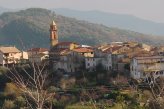
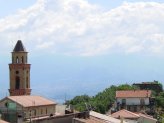

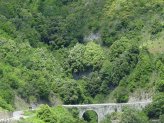
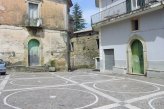
VerdeRosso lies 260 metres above sea level on the 1130 meter high Monte Stella in the medieval village of Stella. Situated in the Cilento National park, VerdeRosso is about 10 kilometres from the sandy beaches at the coast. Village life in Stella reflects the rural peacefulness of it's past and has none of the gaudiness of a touristic resort. With a population of about 900, Stella has 3 small super markets, a post office, a pharmacy and a doctor who trained in the USA (there is a large hospital 25 km away in Agropoli), 2 bars, a church, and a chapel to remember the villagers who died in the two world wars and the Spanish Civil war. Note that shops close between 13.00 and 16.30 or 17.00.
Stella Cilento overlooks the valley and coastline and is surrounded by The National Park of Cilento and the Diano Valley, the second largest park in Italy.
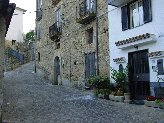
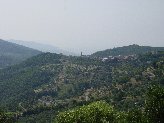

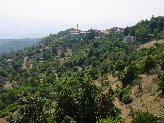
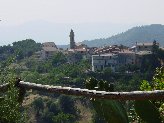
Cilento in Salerno
Cilento is situated in the Province Salerno (Campania, Southern Italy) between Agropoli, Sapri and Vallo di Diano, near Calabria, Naples and Pompeii. With a surface area of 4,917 square km, Salerno has a population of just over 1 million inhabitants. Divided into 158 Municipalities, the Province includes the celebrated "Costiera Amalfitana" in the North, with the picturesque little towns of Amalfi, Tramonti, Positano, Conca dei Marini, Praiano, Cetara, Furore, Atrani, Scala, Minori, Ravello, Maiori and Vietri sul Mare, and the enchanting Cilento coast to the south. Since antiquity an important colony of the Greeks, it became a Roman territory in 194 BC and maintained its culture and traditions during the occupation of Goths, Byzantines, Languebards and Normans. In the early Middle Ages the town of Salerno hosted the oldest university in Europe, the Schola Medica Salernitana, the most important source of medical knowledge in Europe at the time.
A mere one-hour drive from the Amalfi Coast and Salerno (65 km away), Cilento is an adventure´s dream with its meandering coast and towering mountains. Few foreigners make it south of Salerno, but those who do can treat themselves to a classic Italian beach vacation where the water is cleaner and the beaches far nicer than anything on the Amalfi Coast. The still relatively undiscovered Cilentian coastline stretches for 100 km and is dotted with countless tiny bays and beaches and flanked by impressive hills and mountains.
The Cilento National Park
The National Park of Cilento and the Diano Valley forms the second largest park in Italy. The park stretches from the Tyrrhenian coast to the foot of the Apennines in Campania and Basilicata, and includes the mountains Alburni, Cervativi - the highest in Campania with 1.898 metres – and the Gelbison Mountains; as well as the coastal buttresses of Mount Bulgheria and Mount Stella. The Alburni Mountains, whose name derives from the word albus indicating the presence of white limestone of the Cretaceous period, form the northern part of Cilento and stretch for approximately 170 square kilometres. Their calcareous nature has led to the creation of a number of beautiful caves: those in Castelcivita, inhabited since the Neolithic Age; those in Petrosa, which are interwoven for about 2000 meters and where, near Polla, the remains of wild goats, wild boars and an extinct bovid, the aurochs Bos primigenius) have been found. The landscape you can enjoy from the peak of the massif is incredible: the Alburni Mountains are a natural balcony from which it is possible to see the whole plain of the Sele, the Tanagro, the Calore, the internal buttresses of Cilento, and far away the sea.
The coastal area is characterized by two Sea Parks - Infreschi and Santa Maria di Castellabate - and a series of inlets, little sandy beaches, steep rock faces and promontories dominated by old watch towers built for the defense of the urban nuclei give it its typical Mediterranean aspect. The closest beach is Casal Velino Marina which is about 10 km away from VerdeRosso, with Ascea, the next beach, at 18 km. For more information on parks see the official site for all Italian National Parks http://www.parks.it
Surrounding Villages
Above and below Stella Cilento are numerous villages which are interesting to visit. Just a few kilometres above Stella is the historic village of Amalafede. Stone houses dominate this almost gloomy landscape lending an air of mystery to this virtually undiscovered village.
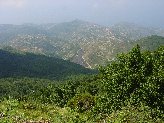
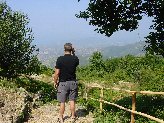

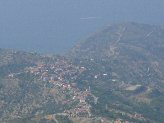
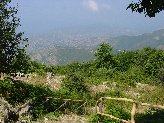
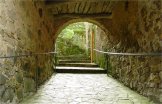
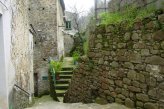

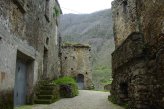
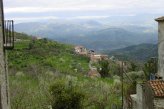
The town of Agropoli in the northern tip of the national park Cilento is a beautiful romantic old city and near the archeological city of Paestum. This historical town is 35 km south of Salerno and has an excavation site with numerous well-kept temples that attest to the art of Greek buildings. From here you can visit Capri, Amalfi and Pompeii. Paestum has an 18 km long and 50-meter wide sandy beach. Paestum and the Amalfi coast are all treasures that have long been admired for their numerous sandy bays.
South of the Cap of Palinuro is a beautiful coastal road to Marina di Camerota, a romantic fishing town in a bay. Its yacht and fishing harbour together with the piazza form the centre of the town. Scario, a picturesque fishing village on the Cilento coast, is also well worth a visit.
Padula is distinguished by the presence of the biggest and most beautiful monastery in Europe. The Certosa of S. Lorenzo founded in 1306 and covers a good 52.000sq.m. Inside there are various rare art treasures and paintings, all well preserved. Another attraction at Padula is the memorial to 300 patriots of Carlo Pisacane who were buried here in 1857.
In Teggiano are a number of antique churches, built between the X111 and XV centuries. Clsoe by is Laurino, a small medieval village with notable historic interests. Also in this area is Magliano Vetere: an antique village built on a ram of a mountain and boasts panoramic views. The town Ogliastro is a typical town of the hilly Cilento with views of Capri.
Pioppi is a small romantic fishing village with a picturesque beach promenade with small cafes and a piazza with palm trees. Old, majestic villas give this village a grand atmosphere, accentuated by the views of the gulf of Velia and the cap of Palinuro.
Pisciotta Marina lays at the foot of the hill of Pisciotta Paese, which is a small romantic vacation town with quiet fishing harbor and numerous small restaurants.
Terradura is an old, typical southern Italian mountain village with splendid ocean views.
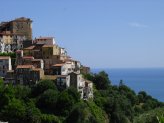
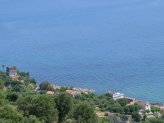

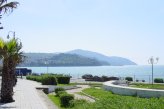
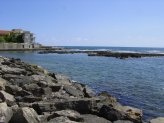
Fauna and Flora
An important aspect of Cilento is its flora. There are approximately three thousand botanical species which can be associated to a mosaic of vegetal landscapes: from the rich and variegated Mediterranean maquis to the coastal pinewoods of aleppo pine; from the ilex groves to the mixed wood of broadleaf trees in the hilly and the piedmont regions. Higher up are wide and ancient beechwoods, sometimes mixed with some silver firs and birches, which are present in the typical Apennine mountain pastures. The most interesting elements are the Primula palinuri and the Genista cilentina, punctiform native elements of the Park. The beautiful fields of lavender are characteristic of the Cervati area: their colored flowers cover the non-forested areas and even the borders of the beechwoods, while their perfume attracts a rich entomofauna. The ubiqutious olive trees, some more than a hundred years old, are very different from the crooked trees of northern Italy. Imported by the Moors from Lebanon centuries ago, these Saracen olive trees are tall and upright..
The avifauna is of particular interest, both from a naturalistic and a scientific point of view. A couple of golden eagles (Aquila chrysaetos) nest in the Cervati area, and the presence of other wandering specimens has been regularly signaled: among them, the very rare rock partridge (Alectoris graeca), above all in the Apennine area between Sanza and Rofrano; the rare chough (Pyrrhocorax pyrrhocorax), a species typical of the high mountains and which is diminishing everywhere. Other specimens nesting in the Park are the green woodpecker (Picus viridis), the great-spotted woodpecker (Dendrocopos major), the very rare black woodpecker (Dryocopus martius), and the sparrow hawk (Accipiter nisus), a bird of prey typical of the forestal ecosystems. Among the mammals there are the wild boar (Sus scrofa), the marten (Martes martes), the badger (Meles meles), the fox (Vulpus vulpus) and the rare wolf.